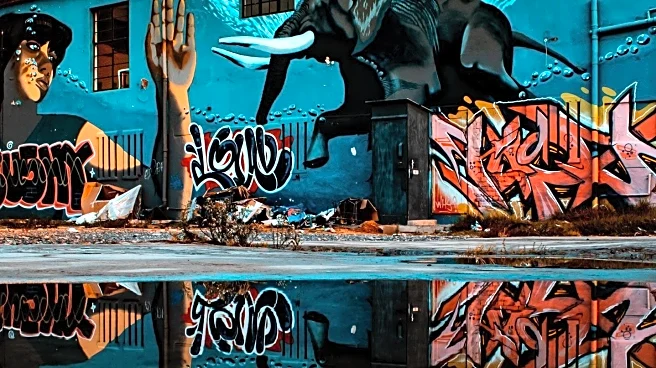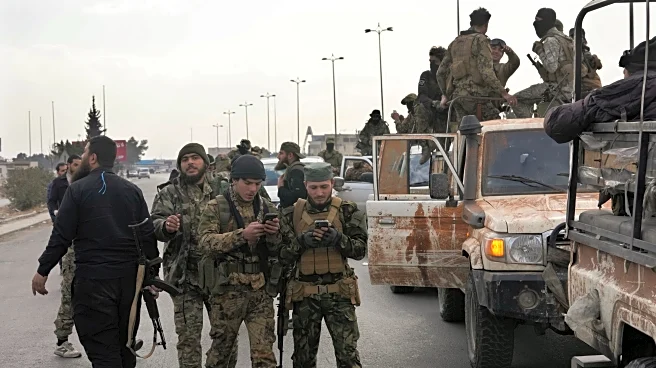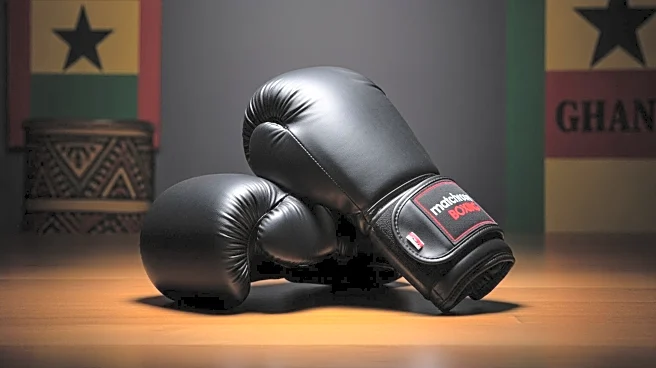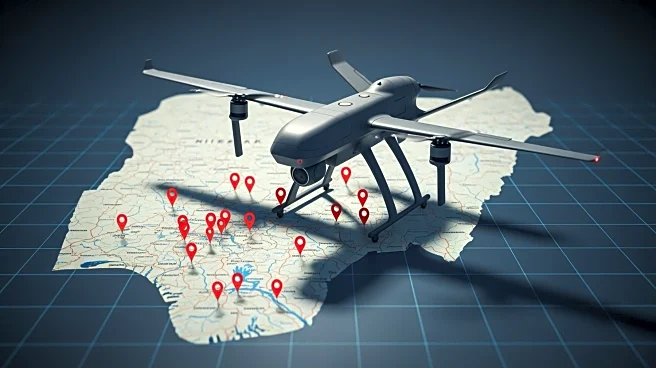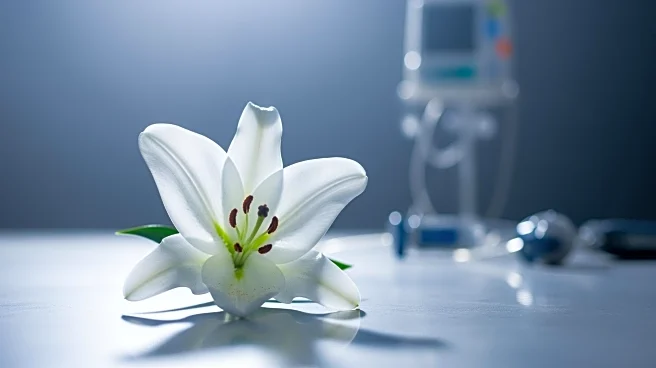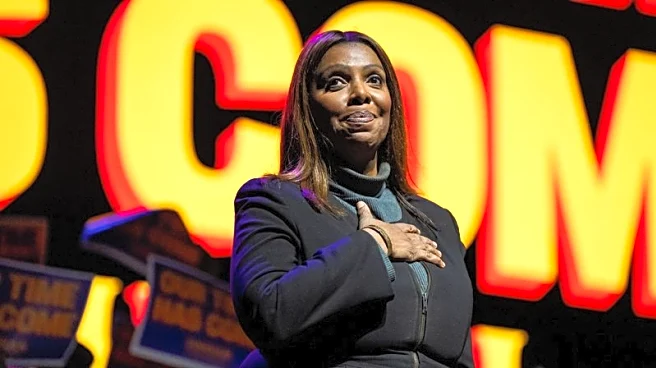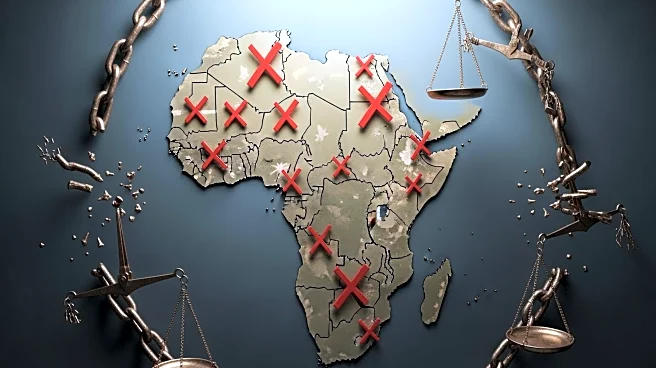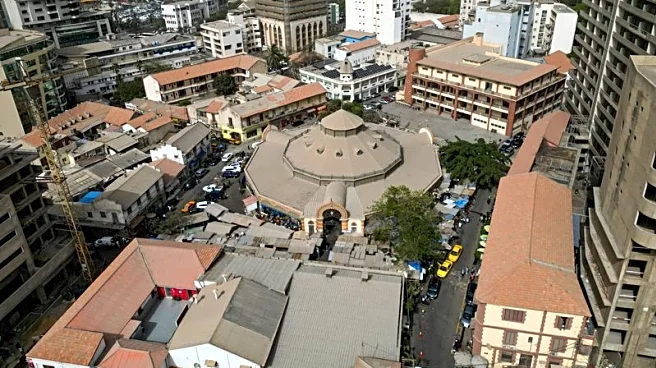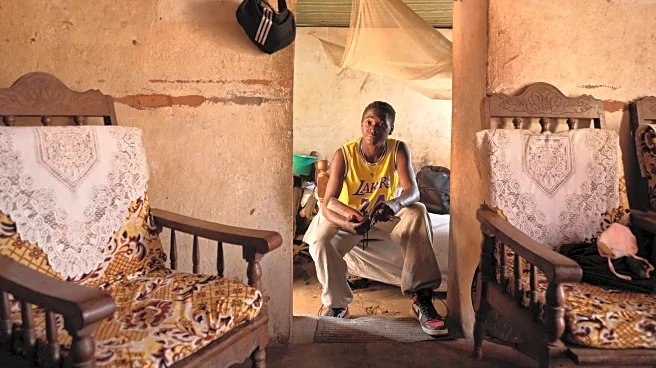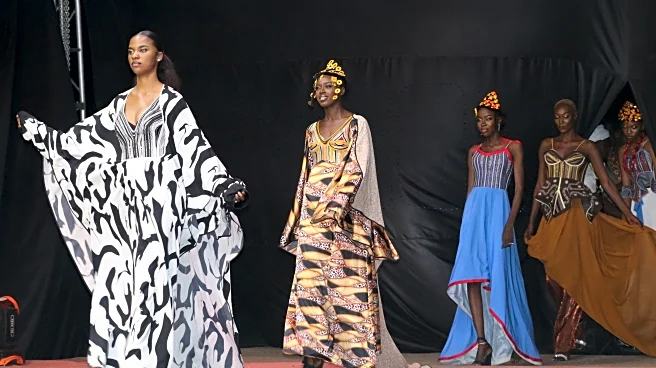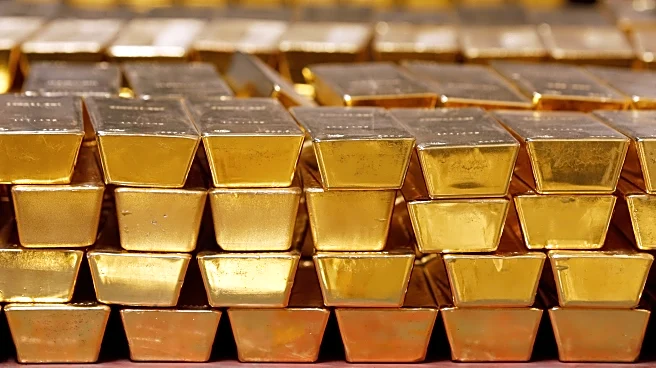What's Happening?
In Conakry, Guinea, graffiti artist Omar Diaw, known as 'Chimere,' is transforming the urban landscape with his vibrant street art. Originally from Senegal, Diaw moved to Guinea in 2018, where graffiti was initially seen as vandalism. Through public awareness
campaigns, such as those promoting COVID-19 preventive measures, Diaw has helped change public perception. His work now features prominently in the city, depicting famous Guinean musicians and African independence leaders. The acceptance of graffiti in West Africa began in Senegal in the late 1980s, led by artists like Amadou Lamine Ngom, who adapted the art form to reflect African realities and values.
Why It's Important?
The growing acceptance of graffiti in West Africa signifies a cultural shift, where street art is increasingly recognized as a legitimate form of expression. This transformation not only beautifies urban areas but also serves as a medium for social and political commentary. In Guinea, Diaw's work addresses issues such as migration, while in Senegal, graffiti has become part of the political discourse. This evolution reflects a broader trend of art influencing public opinion and policy, potentially empowering communities and fostering a sense of identity and pride.
What's Next?
As graffiti continues to gain acceptance, there is potential for more artists, including women, to join the movement. Diaw's work has the support of Conakry's governor, suggesting that official backing could lead to more public art projects. This could further integrate graffiti into the cultural fabric of West African cities, encouraging dialogue on important social issues and enhancing community engagement.
Beyond the Headlines
The rise of graffiti in West Africa highlights the intersection of art and activism. It challenges traditional notions of art as confined to galleries, instead bringing it into public spaces where it can reach a wider audience. This democratization of art can inspire other regions to embrace street art as a tool for social change, potentially influencing global perceptions of graffiti.
